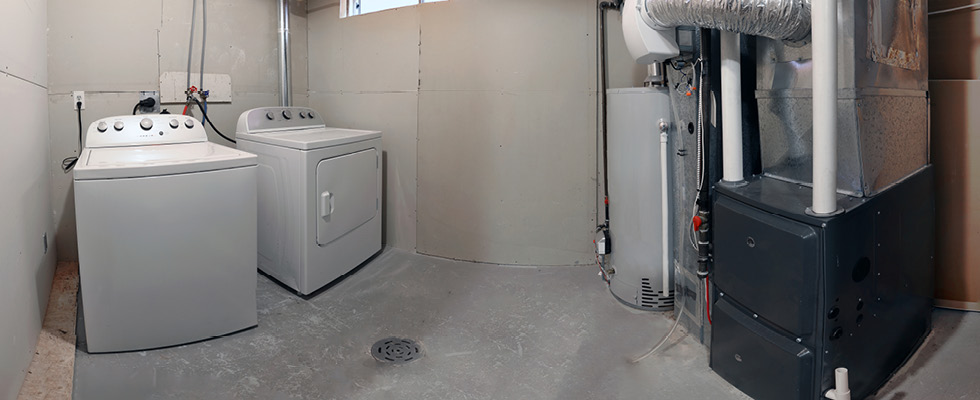
On Dec. 5, 2023, a jury in Roane County, West Virginia, returned a defense verdict in a carbon monoxide poisoning lawsuit against a natural gas supplier. A 10-year-old child died as a result of the 2018 incident, and three others sustained injuries.
The plaintiffs claimed that Mountaineer Gas provided “defective” gas to their residence, causing a furnace to produce carbon monoxide which was released into their home. They sought an unspecified multimillion-dollar award. The case is Carper v. Mountaineer Gas Co.
Main Line Tap
Christopher and Amanda Carper owned a house in a rural area near Looneyville, West Virginia. A natural gas pipeline operated by Core Appalachia passed through Looneyville and transported unprocessed natural gas from wells and gathering lines in the area. Residents, such as the Carpers, who lived near the pipeline were allowed to apply for service directly from the pipeline by means of a main line tap.
The Carpers were approved for such service to their Looneyville house. A line had previously been set up for the prior owner, running from the pipeline to the property. By arrangement with Core Appalachia, Mountaineer Gas supplied the gas to the Carpers. Mountaineer installed a meter set assembly on the property, which included a gas meter, pressure regulator and percolator tank. The purpose of the percolator tank was to extract excess moisture from the gas, which might otherwise cause the regulator to freeze up. Mountaineer billed the Carpers each month for the gas they used at the house.
Roll-Out Switches
The house was heated by a Rheem natural gas furnace. The furnace was purchased new in 2008 when the Carpers moved into their house. It was installed by a local licensed HVAC technician, who tested and cycled the furnace to make sure it was operating properly.
The furnace was equipped with two “roll-out switches.” The purpose of these switches was to protect against high temperatures in the furnace control compartment. Such high temperatures could be the result of incomplete combustion that could generate dangerous levels of carbon monoxide. If the switches sense high temperatures, they shut the furnace off.
The Rheem user’s manual for the furnace, as well as a warning decal on the furnace, state that “if this switch should trip, a qualified installer, service agency or gas supplier should be called to check and/or correct for adequate air supply.” The HVAC technician who installed the furnace testified that the roll-out switches were in their proper positions when he left.
Tragedy & Investigation
Tragedy struck 10 years later. On Dec. 17, 2018, carbon monoxide filled the Carper residence, overcoming Christopher and Amanda, as well as their 10-year-old son Cory and his friend Elijah. Cory died and the others sustained injuries from their carbon monoxide exposure.
An investigation ensued and investigators found that at some point in the decade between the installation of the furnace in 2008 and the incident in 2018, the roll-out switches on the Rheem furnace were unscrewed and removed from their mounting holes. After the incident, investigators found them sitting above and away from the gas burners.
Intentional Act
All parties agreed that the removal of the roll-out switches from their factory-installed position was an intentional act — such devices do not just fall off a furnace. All parties also agreed that operation of a furnace without the roll-out switches in place is dangerous and is a misuse of the product.
After the incident, investigators for all parties examined and tested the furnace. When it was operated with the roll-out switches in place, it shut off after several minutes. When it was operated with the switches unmounted, it continued to run and produced dangerous levels of carbon monoxide. The investigators found that the deadly gas escaped into the residence from a seam that had opened in the exhaust venting.
Mystery Man
There was no evidence as to who removed the roll-out switches. The Carpers denied that they removed the switches, and further denied that they knew the switches had been removed. Christopher Carper’s brother Daniel was a licensed HVAC technician. He performed annual inspections of the furnace, including an inspection in the fall of 2018, only months before the incident. Daniel said that he conducted maintenance and changed the filters but denied tampering with the switches.
To add to the mystery, a neighbor said that before the incident, Christopher told him that he was having trouble with the furnace and someone needed to look at it. Amanda testified that she remembered a “short, fat, dark-haired man” looking at the furnace at some time, but she couldn’t be more specific than that.
Excess Moisture?
Christopher and Amanda sued Mountaineer Gas for their own injuries and for the alleged wrongful death of Cory. The parents of Elijah joined the suit to seek recovery for Elijah’s injuries. At trial, they claimed that Mountaineer was negligent in maintaining the percolator tank.
They backed away from explicitly claiming that the gas quality, or btu content, caused the incident. They claimed that the presence of excess moisture caused incomplete combustion and the resultant production of dangerous levels of carbon monoxide. They also asserted that the incomplete combustion caused unburnt gas to accumulate within the furnace and that this gas exploded within the furnace. This, they argued, opened the seam in the furnace venting that allowed the carbon monoxide into the house.
The case went to trial in November 2023. Mountaineer presented evidence of post-incident testing that showed that the gas delivered to the Carper residence could not have fouled the furnace in the manner that the plaintiffs claimed. Its experts testified that the fouling of the Rheem furnace and its production of carbon monoxide was not caused by excess moisture in the gas.
Defense Verdict
Mountaineer also presented evidence, which was not disputed by the plaintiffs, that the real cause of the incident was the disabling of the roll-out switches. It demonstrated to the jury that with the roll-out switches in place, the furnace shut off, thus eliminating the production of carbon monoxide.
With the switches disabled, the furnace continued to produce dangerous levels of carbon monoxide. The evidence at trial showed that Mountaineer had nothing to do with the installation, inspection or servicing of the furnace and that Mountaineer did not disable any of the roll-out switches.
Plaintiffs’ experts, of course, disagreed. They contended that moisture content of the gas was too high, causing incomplete combustion and the production of carbon monoxide, as well as an internal explosion that opened a seam in the venting that allowed the carbon monoxide to escape into the house.
After deliberating for two hours, the jury returned a defense verdict in favor of Mountaineer. Defense counsel for Mountaineer was Eric Passeggio of Boston, Massachusetts, and Carrie Fenwick of Charleston, West Virginia.




